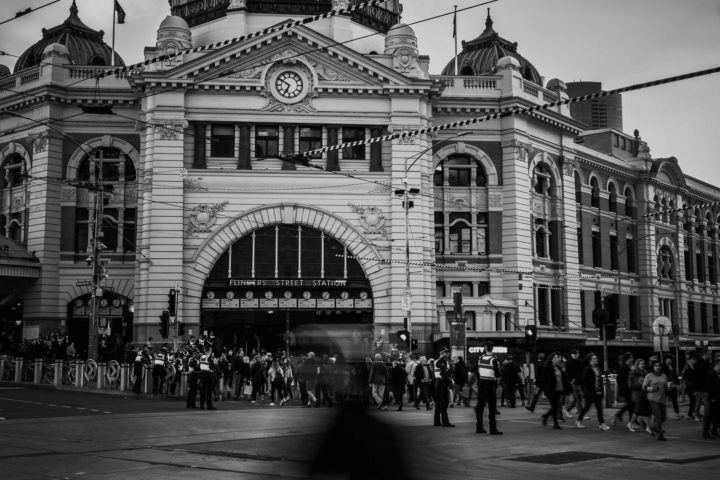There's a well worn adage (attributed to legendary management consultant and author Peter Drucker) that if you don't measure something, you can't improve it.
Never has this been more true than in the retail industry. As a retailer, you need the right data to make the all important strategic decisions that will lead to improved performance across your stores.
For example: do you know how many visitors you had across your stores last month? How many of them converted to a sale? What was the average basket size? And how did those measures change over the last month, or the last year?
In this guide, we take a look at some of the top metrics you should be measuring in your stores, explore how they can help drive success, and investigate what to do if you aren't collecting the right data.
1. Foot Traffic
What It Is: A count of the number of people who enter your stores.
Why It Matters: Perhaps the most basic metric you can collect for a physical retail store, but essential nonetheless. Without knowing how many people actually came into your stores, you can't accurately assess your sales performance (especially in a world that has been turned upside down over the last two years).
And while there are plenty of people counters in the market, not all are created equal. Basic solutions will give you just a simple count (and perhaps not a particularly accurate one, depending on the technology). Advanced retail analytics solutions can provide much more than just that simple traffic number, capturing many of the other key retail metrics to tell you much more detail about what those people did in the store.
A related metric that some people counting solutions can give you is the number of potential customers who walk by your storefront. Understanding the number of passers by gives you further insight into your potential market size and can help you, for example, to plan opening hours to meet demand, or engage in discussions with the shopping centre landlord backed up by solid data to support you.
2. Conversion Rate
What It Is: The percentage of people who came into the store and actually purchased something, calculated by dividing the number of purchasers by the total store foot traffic (total number of store entrants).
Why It Matters: Building on the basic traffic count, your conversion rate provides the next level of insight, by telling you how well you did at converting potential customers into sales.
While you might think you can look at sales figures to evaluate your store's performance, that sales number alone can only ever tell you part of the story. For example, suppose your total sales have gone up by 10%, but your foot traffic over the same period has gone up by 25%. Looking at the sales in isolation you might think that's a good result, whereas in fact your conversion rate is down. Sales numbers alone don't take into account the missed opportunity of converting those potential customers into sales.
3. Average Transaction Value (ATV)
What It Is: The average dollar value of each transaction at the registers, calculated as the total value of all sales across a particular time period, divided by the total number of individual transactions over the same period.
Why It Matters: ATV will give you a general sense of how much you are making on a typical sale, while indicating how well you are maximising each customer interaction. When people come into your store to purchase, you want to make sure you are making the most out of that foot traffic.
5. Units Per Transaction (UPT)
What It Is: The average number of individual units or items purchased in each transaction, calculated as the total number of transactions across a particular time period divided by the total number of units sold over the same period.
Why It Matters: Similar to the average transaction value, units per transaction gives you an indication of how well your team are making the most out of each sale. Taken together, ATV and UPT can provide invaluable insight into store and sales team performance, and serve as useful metrics for comparing relative store performance.
6. Dwell Time
What It Is: A measure of how long shoppers spend in your store, or at a particular department, display or aisle.
Why It Matters: Studies have shown that dwell time has a direct correlation to sales performance, if customers spend more time browsing in store, they buy more. Understanding and tracking dwell time metrics can help you to learn about how and where customers spend time in the store and how they interact with the fixtures. It can also provide data that will drive decisions about where to place the most profitable items, allowing you to experiment with alternative store layouts and in-store signage and analyse the results.
Basic people counting solutions can't usually give you dwell time data: to collect this metric, you'll typically need to use video analytics technology (like the WingArc retail analytics platform).
7. Sales Per Square Metre
What It Is: An indicator of how effectively you are making use of the floorspace available to you, calculated as total sales divided by the total square metres of space available in the store footprint.
Why It Matters: Accounting for store size in your sales analytics is particularly useful if you have a variety of store formats. This calculation compensates for the disparity and allows you to make fair comparisons across your network, as well as benchmark performance against industry standards.
It's also an important metric particularly if you have larger store footprints. Considering all the associated costs that come with larger stores, it is essential to maximise that floor plan. That means putting exactly the right amount of inventory on display, and putting it in the right places. And of course if the store is not performing to standard, that could mean you are paying to lease floor space unnecessarily, and might be better suited to a smaller format in that location.
That said, it's important to also factor in other elements that can contribute to store performance, such whether the store is located in a regional or city location, in a shopping mall or town centre, and so on. This is where other retail metrics, including foot traffic, can come into play to ensure a fair comparison.
8. Sales Per Employee
What It Is: The dollar value of sales divided by the number of employees.
Why It Matters: This metric can be a useful broad indication of your overall performance, while giving you insight into how efficient your team is, how well your sales associates are doing and the optimum number of people you need on the floor.
It's particularly useful if you are increasing or decreasing your staffing numbers, as it gives you another benchmark you can use to assess the effectiveness (or otherwise) of that change.
9. Year on Year Growth
What It Is: A comparison of this year's performance against last year.
Why It Matters: While year on year (and month on month) comparisons have traditionally been a useful way to look at a store's relative performance, the disruptions caused by COVID lockdowns and other government restrictions over the last two years have clearly also disrupted the usefulness of this particular retail metric.
One option might be to simply skip 2020 altogether and compare 2021 performance against 2019. Given the ongoing disruptions that we have lived through in 2021, it's likely that 2022 will also need to be compared against 2019.
Another option is to make use of other data points to enable a fair comparison. Factoring in store traffic, for example, could be a good way to account for lockdowns when comparing 2021 against previous periods.
10. Gross Margin Return On Investment (GMROI)
What It Is: An indicator of how profitable your inventory is, calculated by dividing gross margins by the average inventory cost.
Why It Matters: GMROI indicates how much return you are earning on every dollar that you invest in stock. It might just be the most important of all the retail metrics and can be used across your whole store or within individual departments. Calculating this metric for individual categories allows you to assess relative performance, and identify underperforming product lines or departments.
Unlock Retail Metrics
Explore WingArc Retail Analytics to see how in-store analytics enables you to you understand your customers, reduce costs, and measure your marketing.



